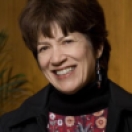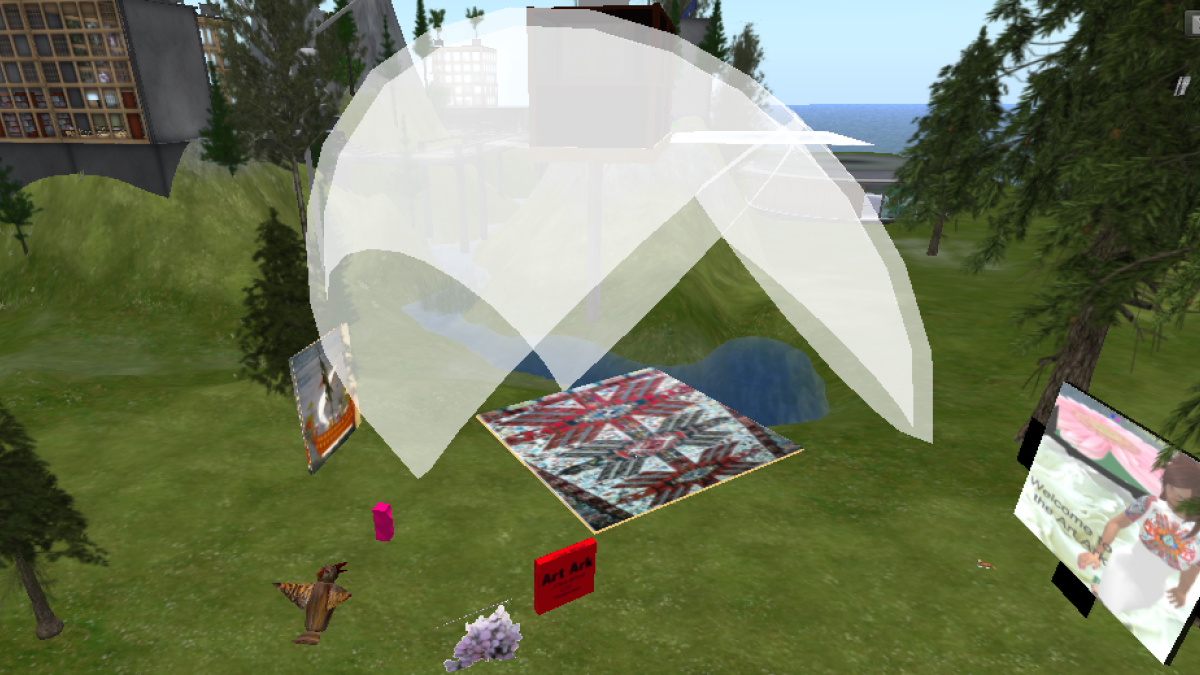You can open a book and look at a picture of an artistic masterpiece or, in a virtual world, you can soar inside a 3-D version and become part of it.
An Arizona State University professor has become an expert in teaching via virtual worlds — computer-based simulated environments where users create avatars, which are online versions of themselves.
Mary Stokrocki, an art education professor in the School of ArtThe School of Art is part of the Herberger Institute for Design and the Arts., has created artistic worlds not only for the ASU students she teaches but also for children and senior citizens. She teaches primarily in the Second LifeSecond Life is a virtual online world where users can explore the environs via digital avatars of themselves, or other creations. The service has more than 1 million users. virtual world.
“Everyone thinks this is a game,” Stokrocki Stokrocki was named the 2015 Kenneth Marantz Distinguished Fellow for the U.S. Society for Education Through Art. She also was the editor of the 2014 book “Exploration in Virtual Worlds: New Digital Multi-Media Literacy Investigations for Art Education.” said. “It’s a multi-use platform. There is multi-literacy — many ways to communicate, including music and dance.”
Stokrocki was named the 2015 Kenneth Marantz Distinguished Fellow for the U.S. Society for Education Through Art. She also was the editor of the 2014 book “Exploration in Virtual Worlds: New Digital Multi-Media Literacy Investigations for Art Education.” said. “It’s a multi-use platform. There is multi-literacy — many ways to communicate, including music and dance.”
The virtual worlds are practical. Students can communicate with peers around the world and explore textures and spatial design instantly. And they can build sculptures or architecture in Second Life that can be created in real life using a 3-D printer.
Much of Stokrocki’s work is done across cultures, including several months teaching “digital ethnography” in Taiwan as a Fulbright Scholar, when she had students create an art exhibit about their country in Second Life.
She has also worked with Navajo and Apache students and participated in a virtual-world project at a charter school in Apache Junction.
Using avatars can transform students and free them to open their minds about themselves, she said.
“I worked with 80-year-olds. In real life, no hair. In Second Life, hair. Tattoos up and down their avatar bodies,” she said.
At first, students hesitate.
“But then they’re fearless,” she said.
Her own avatar is the Lizard of Ars — “ars” is Latin for “art.” Her space in Second Life is called Art Ark (seen in the photo at top).
In class, students learn to search out the masterpieces in the virtual world, like treasures, she said.
"At first they don't know what they're looking for. Our job is to teach them to see.”
More Arts, humanities and education

Upcoming exhibition brings experimental art and more to the West Valley campus
Ask Tra Bouscaren how he got into art and his answer is simple.“Art saved my life when I was 19,” he says. “I was in a dark place and art showed me the way out.”Bouscaren is an …

ASU professor, alum named Yamaha '40 Under 40' outstanding music educators
A music career conference that connects college students with such industry leaders as Timbaland. A K–12 program that incorporates technology into music so that students are using digital tools to…

ASU's Poitier Film School to host master classes, screening series with visionary filmmakers
Rodrigo Reyes, the acclaimed Mexican American filmmaker and Guggenheim Fellow whose 2022 documentary “Sansón and Me” won the Best Film Award at Sheffield DocFest, has built his career with films that…


